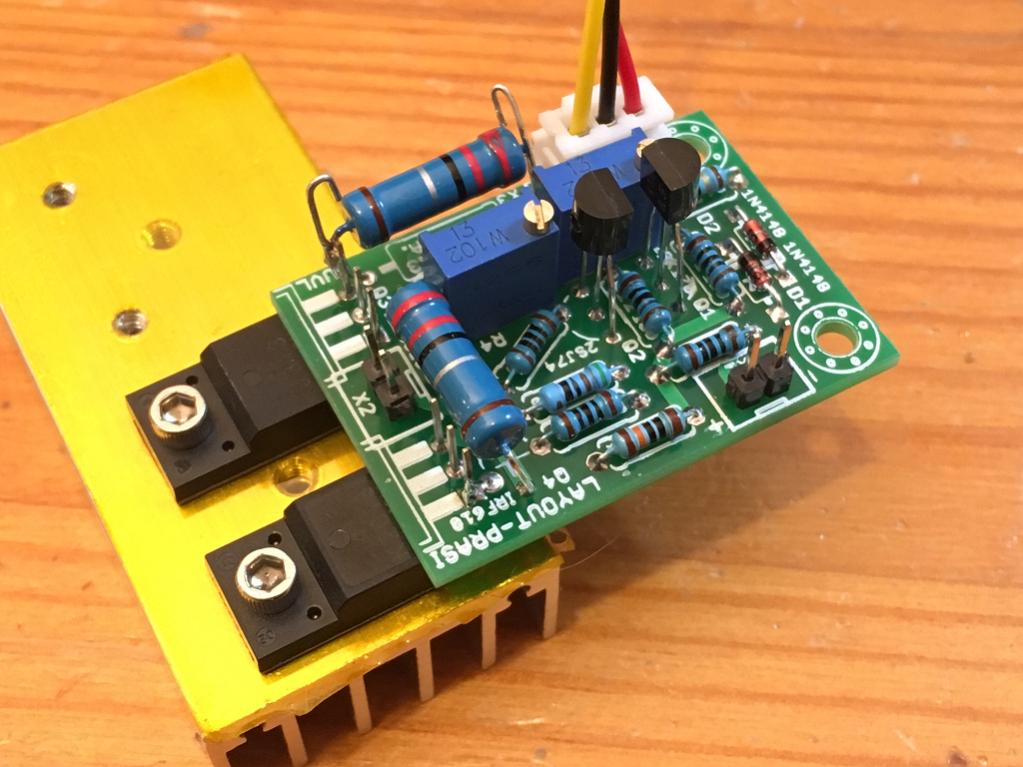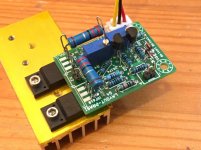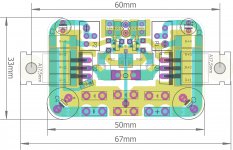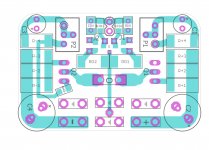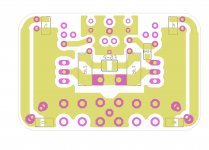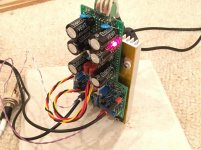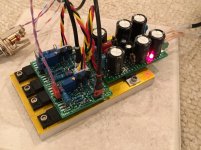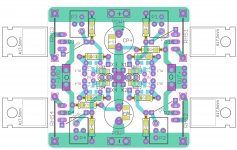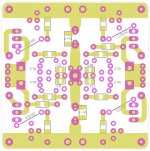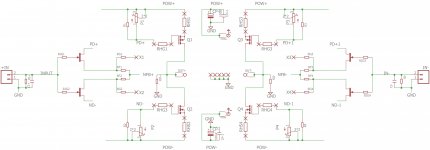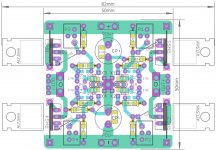if your transformer and rectifier ring, then that leaks through the amplifier to appear at the speaker.
You need to check your PSU is not ringing.
That where the Quasimodo Thread came from.
A friend loaned me his Hantek DSO. No ringing at all on PSU.
You mean switching transients from the diode bridge causing ringing? I have 330pF plus 10R snubbers at the output of each rectifier bridge formed by four 1N4004 diodes. So is using the fancy MUR or MSR TO220 style diodes supposed to not have ringing? Would the ringing be audible? As I said this amp is dead silent.
What's the Quasimodo thread?
In general, there is really no universal snubbering that "works" for all transformers and diodes. Most of the CR snubbers that are not optimized for the diode and the transformer combos are likely just moving the resonant frequency. The Quasimodo thread is well worth to read, at the least, for this particular discussion.
Anyhow, snubbering discussion probably belongs to a different thread.
A friend loaned me his Hantek DSO. No ringing at all on PSU.
Have you tried a 1kHz square wave on the output? Interested to see what that looks like.
Too late - I just shipped the amp to my friend. I have one at work that's in a cardboard box that I can try. I think this circuit is supposed to be pretty clean and bandwidth up to 1MHz?
You mean switching transients from the diode bridge causing ringing? I have 330pF plus 10R snubbers at the output of each rectifier bridge formed by four 1N4004 diodes. So is using the fancy MUR or MSR TO220 style diodes supposed to not have ringing? Would the ringing be audible? As I said this amp is dead silent.
What's the Quasimodo thread?
I was skeptical as well. My previous experience was that diodes made only a small difference, but ones with a high Softness factor (information that is lacking in many datasheets, unfortunately) like the MSR860 can make a noticeable improvement. The quasimodo can further improve things (reduce ringing) and is quite worth going through the thread.
Power for an F5 HA
Hello EUVL,
The F5 HA manual says:
"Again, for my own build, I chose to use LM317/227 pre-regulators followed by discrete low-noise Darlington cap multipliers."
I am curious how you referenced the LM317/337. Referenced to ground or to the output? Are there any advantages to be gained by referencing the regulators to the output?
I am also curious how you biased the darlington pair. A resistor from rail to base, a voltage divider, a zener? How big (or small) is the cap from base to ground?
Perhaps you might publish the circuit? A picture is worth a thousand keystrokes. There are more than a buh-zillion designs available on the net, just that I'd prefer to use what the designer used.
Hello EUVL,
The F5 HA manual says:
"Again, for my own build, I chose to use LM317/227 pre-regulators followed by discrete low-noise Darlington cap multipliers."
I am curious how you referenced the LM317/337. Referenced to ground or to the output? Are there any advantages to be gained by referencing the regulators to the output?
I am also curious how you biased the darlington pair. A resistor from rail to base, a voltage divider, a zener? How big (or small) is the cap from base to ground?
Perhaps you might publish the circuit? A picture is worth a thousand keystrokes. There are more than a buh-zillion designs available on the net, just that I'd prefer to use what the designer used.
mlackey: check this post http://www.diyaudio.com/forums/pass-labs/271926-f5-headamp-3.html#post4333022
Input JFET pair, board is compatible with both THT&SMD input JFETs.
THT JFETs can be both SGD&GSD with minimal bending.
SMD JFETs are SOT-23 Fairchild MMBF5457/MMBF5460 pinout.
In all cases, presumed Source & Drain are interchangeable.
THT JFETs can be both SGD&GSD with minimal bending.
SMD JFETs are SOT-23 Fairchild MMBF5457/MMBF5460 pinout.
In all cases, presumed Source & Drain are interchangeable.
mlackey: check this post http://www.diyaudio.com/forums/pass-labs/271926-f5-headamp-3.html#post4333022
Thank you!
Super compact 2SK2013/2SJ313 F5 HA with modified Juma cap multiplier. Just needs external source of +/- 18v to 19v. Dual 19v laptop SMPS in series can work.
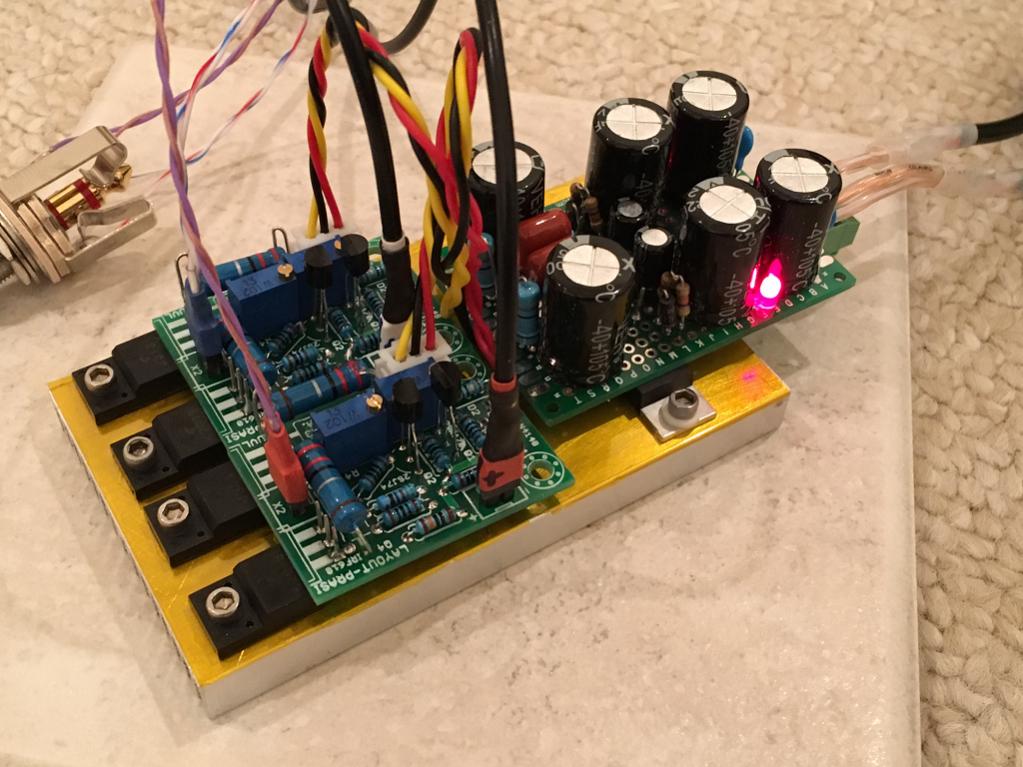
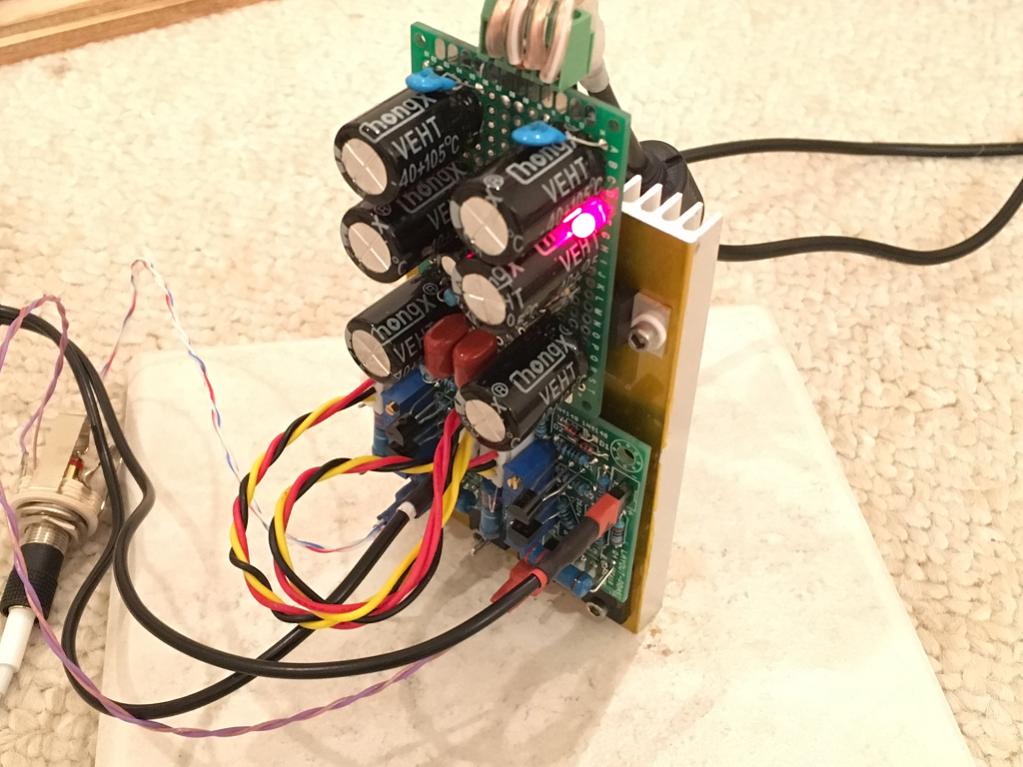


Attachments
Last edited:
Very tight and nice build ! With less than 1 mm between boards so tight that one almost asks himself why no single board was used 🙂 Just teasing, it is good that the cable and connector industry keeps work.
One point of concern: the caps look like suspect brand/types and some googling reveals that "ChongX" (who invents these names?) really are mediocre...When one rail fails I guess it is known what happens with DC coupled amps. Most good headphones cost more than 6 good caps cost. No DC protection means careful choice of parts is needed.
You seem to trust on the transistors keeping the boards in place but just a minimum of 2 short standoffs and connections have way less possible mechanical tension which translates in higher reliability. Why not cut the transistor lead wires ?
One point of concern: the caps look like suspect brand/types and some googling reveals that "ChongX" (who invents these names?) really are mediocre...When one rail fails I guess it is known what happens with DC coupled amps. Most good headphones cost more than 6 good caps cost. No DC protection means careful choice of parts is needed.
You seem to trust on the transistors keeping the boards in place but just a minimum of 2 short standoffs and connections have way less possible mechanical tension which translates in higher reliability. Why not cut the transistor lead wires ?
Last edited:
Very tight and nice build ! So tight that one almost ask himself why no single board was used 🙂 Just teasing.
One point of concern: the caps look like suspect brand/types.
you read my mind🙂
really super compact🙂. how does it sound compared to your earlier regulated+CM versus just the CM?Super compact 2SK2013/2SJ313 F5 HA with modified Juma cap multiplier. Just needs external source of +/- 18v to 19v. Dual 19v laptop SMPS in series can work.
reg
Prasi
So far just tested sound to make sure it plays music at all with cheap earbuds. Using dual laptop SMPS bricks I am picking up a low level ground loop hum - so need to debug. It may just be a no go with these SMPS in which case a small toroidal with voltage regulators upstream again. Trying to keep it small though.
Regarding ChongX budget caps: I know they are cheap but I have had good luck with them so far and a dozen amps layer. Bag of 50 for $4 🙂
I think a single CM in the PSU is fine as I plan on using crossfeed filter so monoblocks with a million dB isolation isn't needed.
Regarding ChongX budget caps: I know they are cheap but I have had good luck with them so far and a dozen amps layer. Bag of 50 for $4 🙂
I think a single CM in the PSU is fine as I plan on using crossfeed filter so monoblocks with a million dB isolation isn't needed.
Regarding ChongX budget caps: I know they are cheap but I have had good luck with them so far and a dozen amps layer. Bag of 50 for $4 🙂
So, essentially we are building high quality class A NP inspired DC coupled stuff with cheap budget substandard parts hoping that we're lucky 😉 Kind of defies building high quality devices somehow....maybe a DC protection/muting circuit is not such a bad idea.
I have binned 500 piece boxes with excellent caps because of shelf life. Go figure....
Last edited:
- Home
- Amplifiers
- Pass Labs
- F5 Headamp ?
